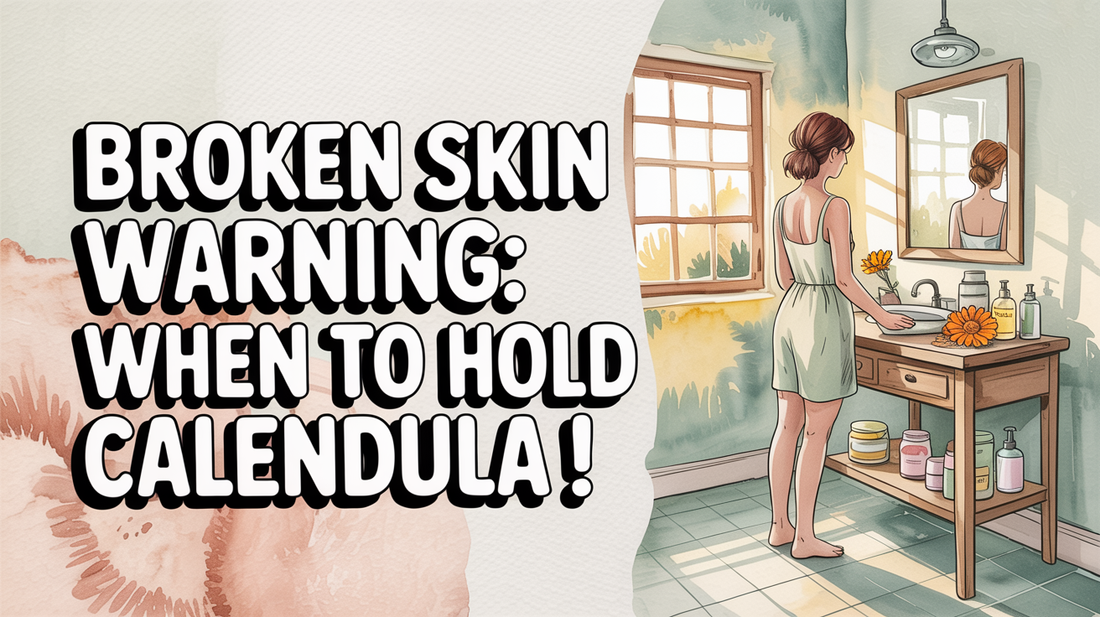Can I put calendula on broken skin?
broken skin caution, skin recovery basics, when to avoid use — Caring for broken skin requires careful consideration. While calendula might offer soothing benefits, there are specific instances where its use should be avoided to ensure proper healing. This post is organized into three sections to guide you through what to consider when dealing with broken skin.
When to Avoid Application
While calendula cream has many gentle properties, there are important situations where it’s best to refrain from applying it to broken skin. For instance, if you have open wounds with active bleeding, it’s important to wait until the bleeding stops and the area has begun to clot. This helps avoid complications in the healing process.
Additionally, deep puncture wounds or severe lacerations should be assessed by a healthcare provider before any topical application. Applying calendula in these cases could trap bacteria, potentially complicating healing. Furthermore, if you notice any signs of infection—such as redness, warmth, swelling, or pus—it's wise to avoid application, as it might mask symptoms that need medical attention.
- Open wounds with active bleeding: Wait for bleeding to stop before applying.
- Deep puncture wounds or severe lacerations: Require medical assessment first.
- Signs of infection: Avoid use if you notice swelling, pus, or redness.
- Allergies: Those with known allergies to calendula or related plants should refrain from use.
- Severe burns: Always consult a professional for treatment.
- Surgical sites: Avoid unless approved by a healthcare provider.
Caring for Skin While It Recovers ✨
During the healing process, proper skincare is essential to promote recovery and minimize complications. Start by keeping broken skin clean and dry. Gently clean the area with mild soap and water daily, and avoid any harsh scrubbing that may irritate the area. It's also important to maintain a proper moisture balance; using a gentle moisturizer or appropriate dressing can help without causing excess moisture that might promote bacteria growth.
Protection from further injury is crucial, so consider covering the area with a bandage that allows some air circulation. This can help prevent contamination and reduce irritation from friction. Nutrition also plays a vital role; ensure you’re consuming enough protein, vitamin C, and zinc to support your body’s natural healing processes. For example, incorporating foods like chicken, citrus fruits, and nuts can be beneficial.
- Keep wounds clean and dry: Use mild soap and pat dry gently.
- Use appropriate moisturizers: Balance moisture without over-saturation.
- Cover the area: Protect with bandages to prevent further injury.
- Eat well: Focus on nutrients that support healing like protein and vitamin C.
- Avoid picking at scabs: Let them heal naturally to reduce scarring.
- Check for healing signs: Look for reduced redness and swelling.
Why We Recommend a Gentle Helper 🌿
Jane Vine Calendula Cream is a great option for those looking for a gentle, soothing moisturizer as the skin recovers. It may help support a calm routine and reduce irritation, providing a lightweight feel that absorbs quickly.
- Fast-absorbing and unscented.
- Skin-soothing ingredients.
- Inspired by nature.
When to Seek Professional Care 🔍
While many minor injuries can be treated at home, there are circumstances that necessitate professional medical attention. For example, if you notice increasing redness, warmth, or swelling around a wound, these could be signs of infection requiring immediate care. If you experience persistent bleeding after 10-15 minutes of applying pressure, it’s important to seek help to control the bleeding and assess potential damage beneath the surface.
Additionally, if you have deep or gaping wounds, these might require stitches or professional cleaning. It’s also crucial to get medical evaluation for wounds larger than 2 inches or those located on sensitive areas like the face or joints. If healing seems delayed or you notice no improvement after a few days, don’t hesitate to consult a healthcare provider.
- Signs of infection: Redness, warmth, or pus indicate a need for medical attention.
- Wounds that won't stop bleeding: Seek care if bleeding persists after pressure.
- Deep or gaping wounds: Likely need medical assessment and possible closure.
- Large wounds or in sensitive areas: Should be evaluated by a healthcare provider.
- Delayed healing: Consult if no improvement is seen after a few days.
- Tetanus concerns: Update vaccinations if necessary.

